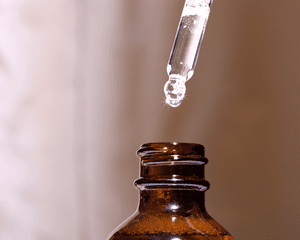:max_bytes(150000):strip_icc()/monistathairloss-193980f3c3c04d798b29a0d0d73da0f2.jpg)
Stocksy
We thought we'd heard it all when it came to out-of-the-box beauty uses for common OTC meds: think Preparation H for under-eye bags and crushed up Aspirin on pimples. But the internet's current fascination with using Monistat—yes, the cream used for vaginal yeast infections—as a hair growth treatment really left us scratching our heads. So we asked trichologist and founder of Colour Collective Kerry E. Yates, William Gaunitz, WTS, certified trichologist and founder of Advanced Trichology, and board-certified dermatologist Marie Hayag, founder of 5th Avenue Aesthetics to weigh in as to whether or not there's any legitimacy behind the buzz. The short answer? Kind of, but not really. Keep reading to learn more.
Meet the Expert
- Kerry E. Yates is a trichologist and founder of Colour Collective.
- William Gaunitz, WTS, is a certified trichologist and founder of Advanced Trichology.
- Marie Hayag is a board-certified dermatologist and founder of 5th Avenue Aesthetics.
Monistat
Type of ingredient: The active ingredient in Monistat is miconazole nitrate, an anti-fungal ingredient.
Main benefits: It can address fungal infections on the scalp, including seborrheic dermatitis.
Who should use it: According to the experts we spoke with, Monistat is not an advisable hair loss treatment. That being said, it would be most beneficial for those dealing with fungal infections on the scalp.
Benefits of Monistat for Hair
:max_bytes(150000):strip_icc()/GettyImages-1329936397-28778f21bef841a8a107cf4477e4653a.jpg)
Tanja Ivanova / Getty Images
Let's start with a big caveat right off the bat: "There haven't been any clinical studies or evidence that support Monistat as an effective hair loss treatment," says Hayag. "All of the evidence is purely anecdotal. I don't recommend trying this, as there are definitely other, proven treatments out there that are much better options." That being said, all of that Internet hype has to have come from somewhere, right? It has to do with the active ingredient in Monistat, miconazole nitrate, an anti-fungal that fights yeast infections. It actually isn't as entirely far-fetched as it may seem to apply it on your scalp because, believe it or not, there is fungus on your head. "It's widely accepted that certain microbes living on the surface of the scalp, including fungus, can create inflammation and influence hair loss," says Gaunitz. He also points out that there are treatment shampoos out there that use similar anti-fungal ingredients to decrease scalp inflammation and hair loss, and that using Monistat is essentially a roundabout way of achieving the same effect. It all sounds good, in theory, but the point is that Monistat would only have any type of effect on hair loss if, in fact, the loss is being caused by an overgrowth of fungus, he explains.
Hayag agrees: "Monistat may be effective in clearing up fungal infections at the scalp, improving overall scalp health and facilitating hair growth, but only if the hair loss is related to scalp health," she says. But let's not forget that there are a litany of different factors that can cause hair loss—everything from stress to illness to hormonal issues to a diet deficient in certain nutrients... the list goes on and on. And given the fact that it may be more than just one of these factors that plays a role, addressing hair loss and shedding isn't quite as simple as slathering some yeast infection cream on your scalp and calling it a day.
The other reason Monistat may be touted as a hair loss treatment has to do with the fact that miconazole nitrate has a similar molecular structure to ketoconazole, a medication that has been shown to treat hormonal hair loss, points out Hayag. (A 2020 study published in Dermatologic Therapy found the ingredient to be a promising treatment option for male and female pattern hair loss.) "This may be another reason why people notice a difference when using it for hair growth, although this is just speculation," she warns.
Hair Type Considerations
In theory, the topical should work the same for all hair types and textures, though it is worth noting that a majority of the individuals singing the praises of Monistat as a hair loss treatment have natural hair. Why? Theoretically, given that those with natural hair tend to need to wash their hair less frequently, it might make sense that they may be more susceptible to some of the aforementioned scalp issues and potentially-related hair loss.
How to Use Monistat for Hair
:max_bytes(150000):strip_icc()/GettyImages-846216978-9a137a24460f45b8a4a64de470dd5361.jpg)
ipopba / Getty Images
At the risk of sounding like a broken record, all of the experts we spoke with agreed that there are far better and more effective ways to treat hair loss and underscore the importance of understanding the underlying reasons for said hair loss. That being said, it is possible to have a fungal infection on the scalp. "Many people mistake dandruff for an actual yeast infection of the scalp," says Yates. And in this case, you can bet that Monistat is going to work just as well on your head as it does down there. She also adds that, theoretically, the itching associated with a yeast infection of the scalp could potentially impact the hair follicle and subsequently impact hair growth. But again, "the Monistat is working more to create a healthy scalp environment rather than being the agent that causes the hair growth," Yates explains.
Hayag agrees, noting that seborrheic dermatitis is one example of a common fungal infection on the scalp that can result in rough, scaly patches along with dryness and flaking, and that Monistat could help address this.
Keep in mind, however, that if you don't have any underlying scalp problems, using Monistat as a remedy could end up doing more harm than good. Gaunitz cites potential side effects such as clogged pores, excess dryness, damage to hair follicles, and in a cruel and ironic twist, possibly even more hair loss. Hayag adds rashes, irritation, and itching to the list, as well, and notes that those who are on the blood thinner Warfarin should also avoid using Monistat.
Final Thoughts
To put it bluntly, Monistat should be saved for the vagina. Whether you're dealing with scalp issues, hair loss, or both, your best move is to get an expert involved—your doctor, derm, stylist, or a trichologist—so that you can get to the root of the issue. (Pardon the pun.) You can then come up with the most targeted and subsequently effective treatment plan, which, spoiler alert, probably won't involve vaginal yeast infection cream.





